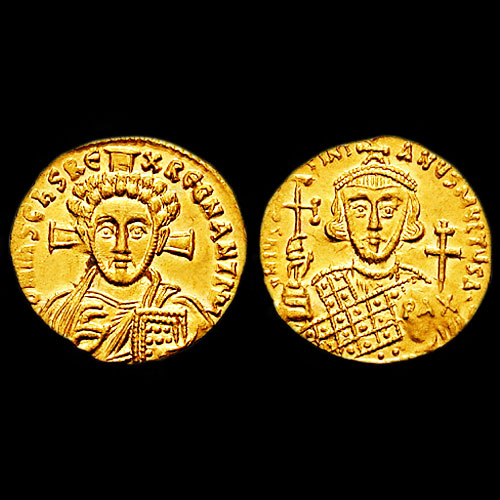Byzantine Empire
2018-06-19 Tue
Byzantine Empire, also known as Eastern Roman Empire, was a powerful civilization with origins that can be traced to 330 AD, when the Roman Emperor Constantine I dedicated a “New Rome” on the site of the ancient Greek colony of Byzantium.Though the western half of the Roman Empire crumbled and fell in 476 A.D., the eastern half survived for 1,000 more years, spawning a rich tradition of art, literature and learning and serving as a military buffer between Europe and Asia. The Byzantine Empire finally fell in 1453, after an Ottoman army stormed Constantinople during the reign of Constantin e XI.
Every Byzantine emperor minted their own coins, from Constantinople, the capital. The other mints in major provinces are Italy (Ravenna), Sicily (Syracuse), Anatolia (Antioch) and North Africa (Carthage and Alexandria).
Byzantine currency consisted of mainly two types of coins: the gold solidus and a variety of clearly valued bronze coins. Early Byzantine coins continue the late Roman conventions: on the obverse, the coin depicts the head of the Emperor and the reverse usually have a Christian symbol such as the cross, bust of Christ or a victory or an angel.
Image Source: Google Images
Latest News
-
Panchala King Bhanumitra Copper Coin
2024-04-26 FriThe Panchala kingdom was ruled by the Mitra kings. The Mitra kings are known to issue coins and most...
-
Mahatma
2024-04-25 ThuIndia Post issued a commemorative postage stamp on #LalaHansraj, also known as Mahatma Hansraj for�...
-
Berar Mint of Muhammad Akbar
2024-04-25 ThuBerar was a kingdom located in the Deccan region, with Elichpur as its capital. It was one of the Su...
-
Janma Kalnayak of Bhagwan Mahavir
2024-04-24 WedOn 21st April 2024 which was the 2550th Janma Kalnyanak of Bhagwan Mahavir Swami, PM Modi unveile...
-
Gold Pagoda of Vijaynagar Empire King Deva Raya I
2024-04-10 WedKing Deva Raya I of the Vijayanagara Empire was a patron of Kannada literature and architecture. He ...

